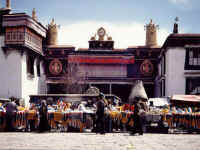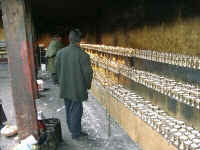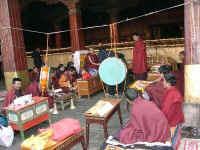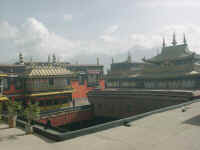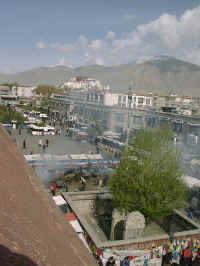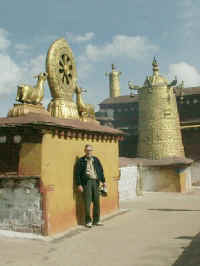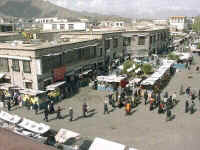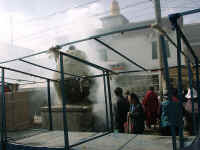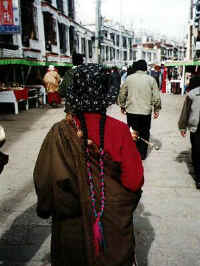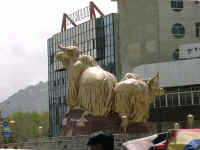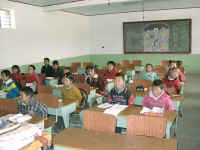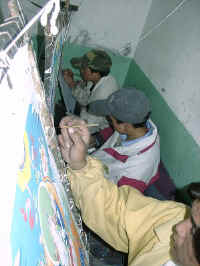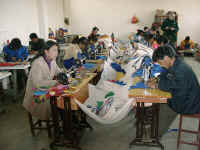|
TIBET Tuesday, 18 April. The breakfast was a little better than it had been our first morning in Tibet. At 9:30 the bus took us to the old Barkhor district where we visited the Jokhang Temple, built in the 7th century by the same king who built the original Potala Palace. Like the Palace, much of it was rebuilt in the 17th century. This is the most holy temple in Tibet and is a site of pilgrimage for Tibetans from the entire country. Tashi led our group through the Temple, often struggling to get through the crush of pilgrims. Other than pointing out the original Statue of Buddha that the Temple had been built to house, he gave us what seemed like the same lecture in Buddhist theology we'd already heard so often. We went onto the roof where there was a nice view of the market, as well as of the Potala Palace. When we finished inside the Temple, we had over an hour of free time. We did the "circumambulation" on the circular path around the Temple (called the kora). It is also considered sacred, and we passed many pilgrims walking it, prostrating themselves every few steps or lining up at the five gigantic incense kilns spaced along the way. Like most places that attract visitors, the area was very comercialized. The kora was completely lined with vendors' stalls, and the big Barkhor Market filled the square in front of the Temple. We looked but didn't buy. At noon the bus took us back to the hotel for lunch. (We'd rather have gone elsewhere.) Then at 3:00 p.m. we went to visit a school down another bumpy dirt road at the edge of Lhasa. It was described to us as a school for the handicapped, but for many of the students the handicap was not physical, but that they were orphans or children from very poor families. We learned that, unlike China proper, there is no free public education in Tibet. Only those who can pay are educated. The majority of the population is poor and therefore never goes to school at all. Naturally, the literacy rate is very low. The school we visited is an exception since it does educate poor children. It currently had 108 students, but it operates on a shoestring. Many of the children learn crafts and make things that are sold to visiting tourists. (We bought a decorative cloth hanging.) Some of the tourists also send donations of money or used clothing. The children live at the school. They sleep eight to a room with little or no storage space for their clothing or personal effects, apparently not a problem because they don't have any. It was really heart-wrenching, especially considering that these children are the few most fortunate ones. We got back to the hotel at 4:30 and attended a one-hour lecture on Tibet at 5:30. That was followed by a Western-style dinner, our best meal at the hotel. It consisted of mushroom soup, a yak burger with french fries, and dessert. The yak burger was a big hit with everyone. It tasted just like a hamburger, though a little less juicy.
Copyright © 2000-2023 DarrellPeck.com All rights
reserved. |

